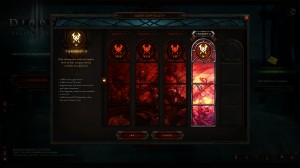The use of difficulty settings in game design has always been argued at different points. Some feel that every game should have them as a means of expanding the user base, while others feel that it messes with the balance of the game and leads to titles that are worse off. It’s a topic that I’ve thought about a lot as someone who plays a lot of hardcore games like the Souls series, and I wanted to talk more about this given the latest crop of games.
A Wide Audience:
The use of “easy, normal and difficult” settings has been a part of game balance for a lot of genres and designs. We’ve seen everything from city builders, RPGs, action games and more, have settings for the player to decide how hard they want the game to be. The implementation of this mechanic is simple: It’s a way for multiple skill sets to enjoy a game without punishing one or the other.
Many RPGs and story-focused titles even say something along the lines of, “Easy is for people who just want to follow the story.” In recent years, we’ve seen some developers go as far as have level or content skips for when things get too difficult. While this may seem sacrilegious for hardcore fans, the option to let people play games at different settings has been a major point in widening the audience of games.
As games have become more cinematic with greater stories, they have attracted a lot of non-gamers who want to play/follow an amazing story, but may not have the skill set for normal or hard play.
Not to mention the fact that many RPG’s difficulty design is based on abstracted rules and systems, something a new player may not understand fully, but would be punished for not using properly.
By having the different settings, someone is not going to get punished because they didn’t understand some crazy rule/mechanic that they wouldn’t know about.
Where critics come in is the fact that difficulty settings don’t work for a lot of titles, and can cause more harm than good in some cases.
Split:
The problem with difficulty settings in most games is the fact that they are very hard to get right in terms of a balanced challenge. You sometimes see developers make the harder settings without any thought in terms of balance; making the game punishing to play, because they think that’s what the hardcore want.
Other times, you have cases where the game is not meant to have different difficulty settings, and there are two examples of this. First are games built around multiplayer or competitive play. The amount of work would be increased dramatically if the game had to re-balance every encounter for multiplayer levels, and the increased server load of having different difficulty shards of their game. Not only that, but you then have to deal with the headache of what happens when players of different skill levels/difficulties meet.
Second is when the game was explicitly designed around a baseline of performance on the player’s part. These are games that are normally skill-based and challenge the player to grow or fail; see the action genre as examples of this. If the designers make the game too easy, then there is no reason for the player to improve their skills and understanding of the game, which is the point of playing.
This is why Dark Souls 3 starts with the Ludex Gundyr fight; if someone can’t beat that fight, then they simply will not be able to play through the game.
If the player is not willing/unable to learn the finer points of play, how is the designer supposed to compensate their design around that?
One way to compensate for expert players is to have the baseline experience or skill required, and then test the player with optional harder challenges; see Champion Gundyr or Nameless King in Dark Souls 3 as examples.
In regards to not properly testing them, this can lead to situations when the design as a whole becomes frustrating to play. In the original form of Diablo 3, the jump to the final difficulty level was so extreme that not only were the designers not able to beat it at the time, but it was frustrating and poorly designed to be used in conjunction with the auction house system.
In the past, I’ve been against having difficulty settings in games and feel that not every game should be designed around them, but there are some cases where it can make the game better as a whole in my opinion.
Difficulty Design:
Difficulty in game design works best when it’s used as a fully integrated part of the design and not just simply altering stat values, and I know that can be confusing to explain.
The first example is when difficulty acts as both a measurement and reward system for playing the game. Some games like to give the player additional rewards or unlock content based on the difficulty that the player is at. For instance, in Kid Icarus Uprising, the higher the difficulty meant getting better rewards and fighting new types of enemies and situations. You can also see that in the amazing The World Ends With You, where the higher difficulty made it possible to find higher quality gear.
In these cases, the player can stay on the easy settings if they want and get through the game just fine, but there is that temptation and allure to bump things up for greater reward. See also Diablo 3 as an example of this with the different settings. Another good one is the Gemcraft series that literally lets the player pick and choose what difficulty factors to have on, and then adjusts the rewards accordingly.
The next example is when the difficulty literally changes the game and becomes a gate between skill levels. In these cases, playing on the higher settings will affect how someone goes through and makes use of the mechanics. XCOM EU and EW along with XCOM 2 are great examples of this one.
The reason is that playing on the lower difficulty, the player is not punished as much for using advanced mechanics and rules, but the option is there for higher skilled players to really fight the enemy.
The best part is that neither group is punished for playing the game their way; expert players don’t have to unlock the higher settings and newcomers can enjoy the base experience.
The point is that the difficulty changes how you play the game and asks different things from the player. My all-time favorite action game Ninja Gaiden Black did just that; every difficulty shuffled up the enemies and items while introducing new situations to fight. For someone playing on normal, they would have a completely different experience compared to someone on Master Ninja.
The key takeaway from these examples is that the developers didn’t simply adjust stats between difficulty settings, but integrated the act of difficulty selection into the game’s design, making it a lot more interesting and rewarding for players.
Not for Everyone:
Every time a new Souls game is released, there will most often be someone talking about why they should add difficulty settings to a game. As we’ve talked about, not every game can/should do difficulty settings; sometimes a game is just not meant to be designed around everyone being able to beat it.
This is where the idea of figuring out the baseline experience comes into play. Once you have an idea of what someone needs to know in order to beat your game, you can then extrapolate that out to all the content in your game, making sure that the difficulty curve is consistent and players are being adequately prepared for harder content.
If you do this just right, then you don’t need difficulty settings, unless you want to build them into the mechanics and progression model itself. Either way, there is no one best option for a game, and it’s going to be up to the designer to determine how the game is going to go.
If you enjoyed this post, please check out the Game-Wisdom Patreon campaign. Your donations can help to support the site and add new content down the line. For daily video content, you can subscribe to the Game-Wisdom YouTube channel and follow me @Gwbycer.




